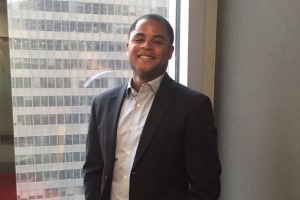Jon Perry ’09 doesn’t consider himself the most disciplined person in the world, but he’s on track to pay off his $25,000 in student loan debt in less than 10 years.
And he also hasn’t made what he considers one of the most common mistakes.
“I’ve had so many of my friends go straight from their job offer to the car dealership. That’s not what you should do.”
The finance major has a 45-minute commute to his insurance job in the Chicago Loop but he’s managed his debt well enough to take on the next big step—buying a house.
Illinois State alumni do an exceptional job of repaying their student loans, so good their loan default rate is only 2.8 percent. Last year, the national average was 13.7 percent.
“I really believe that our low default rate is a product of the students in our programs and the faculty who teach them,” said Jana Albrecht, MBA ’06, director of the Financial Aid Office. “They’re able to find jobs in their areas so they’re able to pay back their student loans.”
Perry agreed, saying he had a job lined up by Thanksgiving his senior year. He credits the College of Business faculty and staff with preparing him for the market, along with helpful advice from the Career Center. “That was absolutely a fundamental part of my success,” he said.
Illinois State students borrow an average of $21,500 in federal loans, which works out to a repayment of about $224 a month over 10 years, according to The College Scorecard, the U.S. Department of Education website. That’s well below state and national averages, Albrecht said.
About one-third of ISU students don’t borrow at all, she added.
Troy Johnson, associate vice president for enrollment management, said there’s another reason ISU students can pay back their loans.
“We have a high graduation rate. Our students have a relatively short time to their degree. Those that are borrowing understand the investment and the value of a university degree.”
As graduation nears, students can visit the Financial Aid Office to go over loan repayment options. Perry advises taking advantage of that, as well as remembering that the six-month grace period before repayment starts is a short window.
“Talk to whomever you have your loans with or calculate it yourself and see exactly what that payment is going to be,” he said. “If you don’t put that into your budget initially, you’re looking at $300 you weren’t planning for. Look at it as a fixed cost, like a car payment, that’ll be there for 10 years, sometimes longer.”
Kate Arthur can be reached at kaarthu@IllinoisState.edu.


